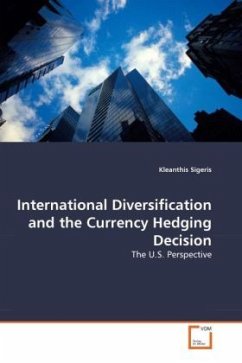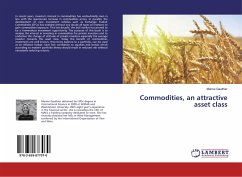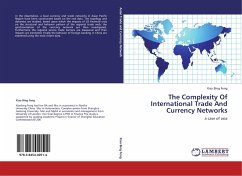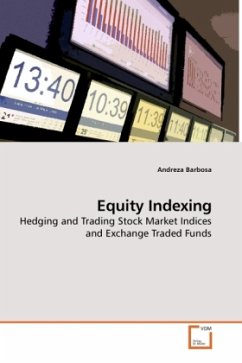
International Diversification and the Currency Hedging Decision
The U.S. Perspective
Versandkostenfrei!
Versandfertig in 6-10 Tagen
32,99 €
inkl. MwSt.

PAYBACK Punkte
16 °P sammeln!
This book investigates how U.S. investors can benefit from international diversification and how currency hedging affects internationally diversified portfolios. Based on data from 2004-2010, international hedged and unhedged efficient frontiers are formatted. Two optimization processes are performed, using twenty national stock index portfolios and fifteen currencies. Moreover, three different hedging strategies are tested. The results show that hedging one individual country index portfolio leads in general to lower levels of standard deviation (risk), but also to lower level of excess retur...
This book investigates how U.S. investors can benefit from international diversification and how currency hedging affects internationally diversified portfolios. Based on data from 2004-2010, international hedged and unhedged efficient frontiers are formatted. Two optimization processes are performed, using twenty national stock index portfolios and fifteen currencies. Moreover, three different hedging strategies are tested. The results show that hedging one individual country index portfolio leads in general to lower levels of standard deviation (risk), but also to lower level of excess returns. Furthermore, in the presence of short sales constraints, there is evidence that U.S. investors, who diversify their portfolios in developed and emerging markets simultaneously, should hedge their exchange rate exposure for low levels of risk, but not for higher levels of risk. When comparing the unitary hedging strategy to the Black's universal hedging strategy, the unitary hedging strategy performs slightly better.












